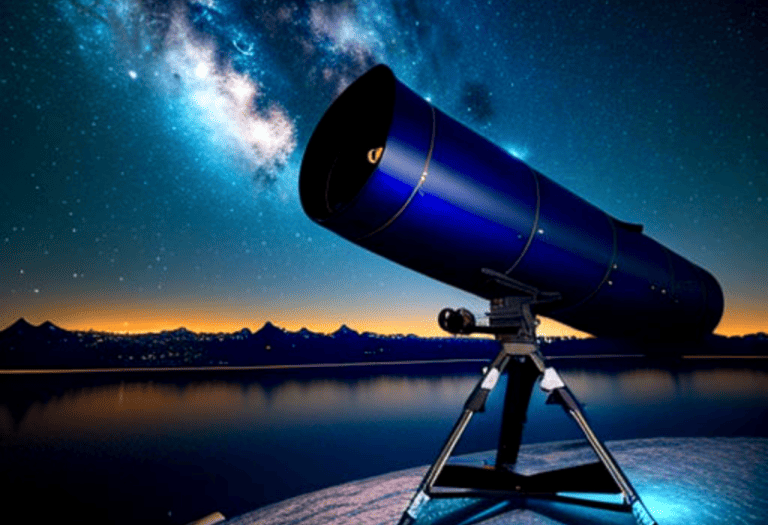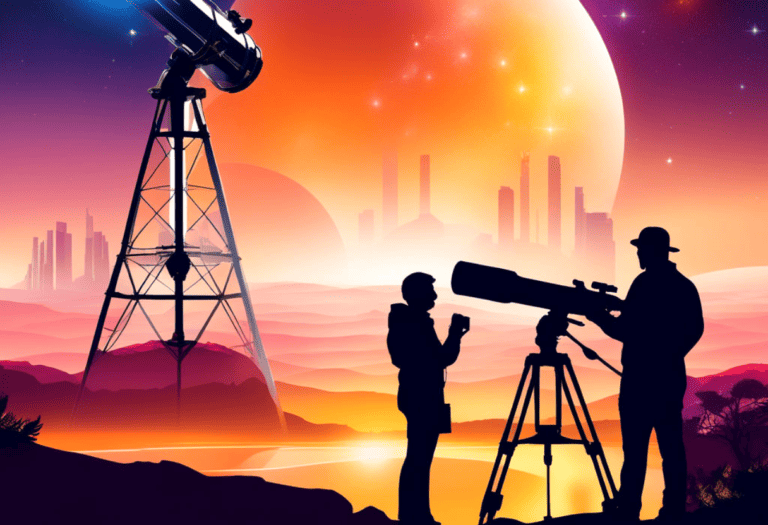Archaeoastronomy merges the disciplines of astronomy and archaeology to unlock the astronomical understanding of ancient civilizations.
This scientific field examines how people in the past have understood the phenomena in the sky, how they used these phenomena, and what role the sky played in their cultures. By studying architectural remains, ancient writings, and other archaeological artifacts, archaeoastronomers aim to uncover the astronomical practices and celestial lore of bygone societies, offering a unique glimpse into human history through the lens of the stars.
The study of archaeoastronomy involves analyzing alignments of ancient structures and artifacts with celestial bodies, such as the sun, moon, stars, and planets. This alignment analysis can reveal significant dates, including solstices and equinoxes, which may have been important for agricultural, ritualistic, or timekeeping purposes. Moreover, it helps us comprehend the social and religious aspects of ancient cultures where celestial events often formed the basis for mythology, ritual, and daily life.
Techniques from this discipline have thus helped shed light on various prehistoric sites, revealing complex knowledge and practices related to celestial events.
Archaeoastronomy is the study of how ancient civilizations understood and used celestial phenomena, focusing on alignments between structures and celestial bodies to reveal the cultural significance of celestial events in ancient times.
Fundamentals of Archaeoastronomy
Archaeoastronomy is the study of how people in the past have understood the phenomena in the sky, how they used these phenomena, and what role the sky played in their cultures. It is an interdisciplinary field that combines aspects of astronomy, archaeology, anthropology, and history to explore the relationships between celestial bodies and human societies.
When you delve into archaeoastronomy, you will encounter several key concepts:
-
Celestial Alignments: You will learn about the alignment of structures or landscapes with celestial events. These are often connected with the solar and lunar cycles, such as solstices, equinoxes, and lunar standstills.
-
Symbolism: You’ll explore how astronomical phenomena are represented in cultural artifacts, which can include myths, symbols, and architectural features.
-
Timekeeping: You’ll understand how past societies used the sky to create calendars to mark time, plan agricultural activities, and hold cultural ceremonies.
-
Navigation: The study extends to how celestial bodies were used for navigation, enabling long-distance travel and trade.
To engage with archaeoastronomy, you should familiarize yourself with basic astronomical principles and develop an understanding of the specific cultural context you are studying. The evidence you will examine might include archaeological sites, ancient inscriptions, or ethnographic records.
By analyzing these components, you contribute to the reconstruction of our ancestors’ cosmologies, offering insights into their knowledge systems and worldviews.
History of Archaeoastronomy
Your journey through the history of archaeoastronomy will reveal that this discipline intertwines the study of ancient cultures with their understanding of the stars. It’s a field that shows how our ancestors used the night sky as a tool for survival, navigation, and spiritual guidance.
Ancient Observatories
Stonehenge in England and the Pyramids of Egypt are your quintessential examples of ancient astronomical observatories. They were carefully aligned with the movements of celestial bodies, signifying their importance in tracking time and seasons for agricultural and ritual purposes. Further evidence of early astronomical practices can be seen in the Americas, with sites like the Sun Dagger in Chaco Canyon, which marks the summer solstice.
Cultural Impacts
Astronomy held a sacred and central role in your ancestors’ worldviews, influencing your cultural heritage and societal development. For instance, the Maya civilization embedded their knowledge of the heavens in their complex calendars, and stories of celestial events are woven into the folklore of countless societies. These histories, accessible through the study of archaeoastronomical sites and artifacts, reveal that the stars were integral to your past societies’ way of life.
Methodologies in Archaeoastronomy
Archaeoastronomy is a field where you encounter a fusion of methods from both the humanities and the sciences. By understanding these methodologies, you can comprehend how ancient structures relate to astronomical phenomena.
Analytical Techniques
Analytical techniques in archaeoastronomy involve precise measurement and evaluation. These methods help you uncover ancient peoples’ understanding and utilization of the sky. One key technique is the analysis of alignments, which requires measuring the orientation of architectural structures against known astronomical events, such as solstices or equinoxes. Researchers apply statistical analysis to discern patterns, bolstered by technological tools like astronomical software which simulates ancient skies.
Another critical technique is field surveying, which includes the use of GPS devices, magnetic compasses, and theodolites to achieve accurate positional data. For example, when examining a site like Stonehenge, you would compare the orientations of the stones with celestial events to infer possible alignments.
Interdisciplinary Approaches
Interdisciplinary approaches in archaeoastronomy bridge the gap between anthropology, archaeology, and astronomy. You need to understand cultural context—myths, art, and historical records—to grasp the astronomical knowledge and practices within past societies fully. A common approach is to incorporate ethnographic studies which link current indigenous knowledge with archaeological findings, providing insight into historical stargazing practices.
Incorporating digital reconstructions allows you to perceive how celestial events were observed from specific locations at different times. By integrating various disciplines, you can assemble a more comprehensive picture of how an ancient society may have interpreted the sky. The insights of modern astronomy are essential, as they provide the factual basis for testing hypotheses about ancient observations. Moreover, collaborating with experts in different fields can foster innovative methods, like the use of 3D modeling to visualize past astronomical events within the context of the archaeological site.
Key Discoveries and Sites
Archaeoastronomy has unveiled numerous fascinating connections between ancient structures and celestial phenomena. Notable sites like Stonehenge, the Pyramids of Giza, and Chichen Itza are testament to prehistoric people’s knowledge of the skies.
Stonehenge
Stonehenge, located in Wiltshire, England, reveals astronomical alignments. It’s believed that the arrangement of these massive stones correlates with the solstices. Your visit around the June solstice would demonstrate the sunrise alignment with the Heel Stone.
Pyramids of Giza
The Pyramids of Giza in Egypt show a remarkable engineering feat incorporating astronomy. The north-south alignment of the Great Pyramid is within a fraction of a degree of true north, suggesting a possible connection to the stars.
Chichen Itza
At Chichen Itza, the Kukulkan Pyramid doubles as an astronomical calendar. During the equinoxes, sunlight casts a serpent-like shadow along the staircase. This precise effect highlights the Maya’s sophistication in merging architecture with celestial cycles.
Contemporary Applications
Archaeoastronomy applies its insights and methodologies beyond academic research, enhancing both the protection of cultural heritage and the dissemination of knowledge to the public.
Cultural Heritage Preservation
Your understanding of archaeoastronomy becomes vital in the conservation of ancient observatories and sacred sites. The precise alignment of structures with celestial bodies provides insights for the preservation of these sites. For example, efforts to maintain the integrity of a site’s orientation and view of the sky are supported by archaeoastronomical research, ensuring that any conservation measures are in line with historical configurations.
Educational Outreach
Through archaeoastronomy, you engage in educational activities that bring ancient knowledge to life. Museums and educational institutions may use these principles to create interactive exhibits, where you can directly experience the astronomical wisdom of past civilizations. By drawing from archaeoastronomical findings, programs are designed to illustrate the ancient techniques of timekeeping and navigation, connecting you with our ancestors’ understanding of the cosmos.
Frequently Asked Questions
In this section, you’ll find succinct, researched responses to common inquiries about the intriguing field of archaeoastronomy, addressing its applications, literature, controversies, education, career prospects, and its historical cultural significance.
How is archaeoastronomy used to interpret ancient sites?
Archaeoastronomy analyzes the alignments and spatial organization of ancient sites to decode how past civilizations understood and utilized the sky. This interpretation of ancient sites often reveals their astronomical knowledge and its role in their cultural and religious practices.
What are some renowned books for understanding the principles of archaeoastronomy?
For those delving into archaeoastronomy, “Archaeoastronomy: introduction to the science of stars and stones” is a key resource that explores the phenomena and dismisses pseudoscientific claims.
Can you explain the controversies that arise within the field of archaeoastronomy?
Controversies in archaeoastronomy stem from debates over interpretations and the risk of pseudo-archaeological claims misleading the understanding of ancient cultures’ astronomical knowledge.
What educational paths can one take to pursue a degree in archaeoastronomy?
Typically, you would study archaeology or astronomy with a focus on the interdisciplinary field of archaeoastronomy; however, dedicated programs are emerging.
What is the potential career outlook and salary range for professionals in the field of archaeoastronomy?
Professionals in archaeoastronomy often work in academia, research, or cultural heritage institutions. The salary range varies widely by position and region, reflecting the broader fields of archaeology and astronomy.
How did ancient civilizations use astronomical knowledge in their cultural practices?
Ancient civilizations integrated astronomical knowledge into agriculture, calendrical systems, and religious rituals, highlighting a deep connection between the celestial and the cultural.







